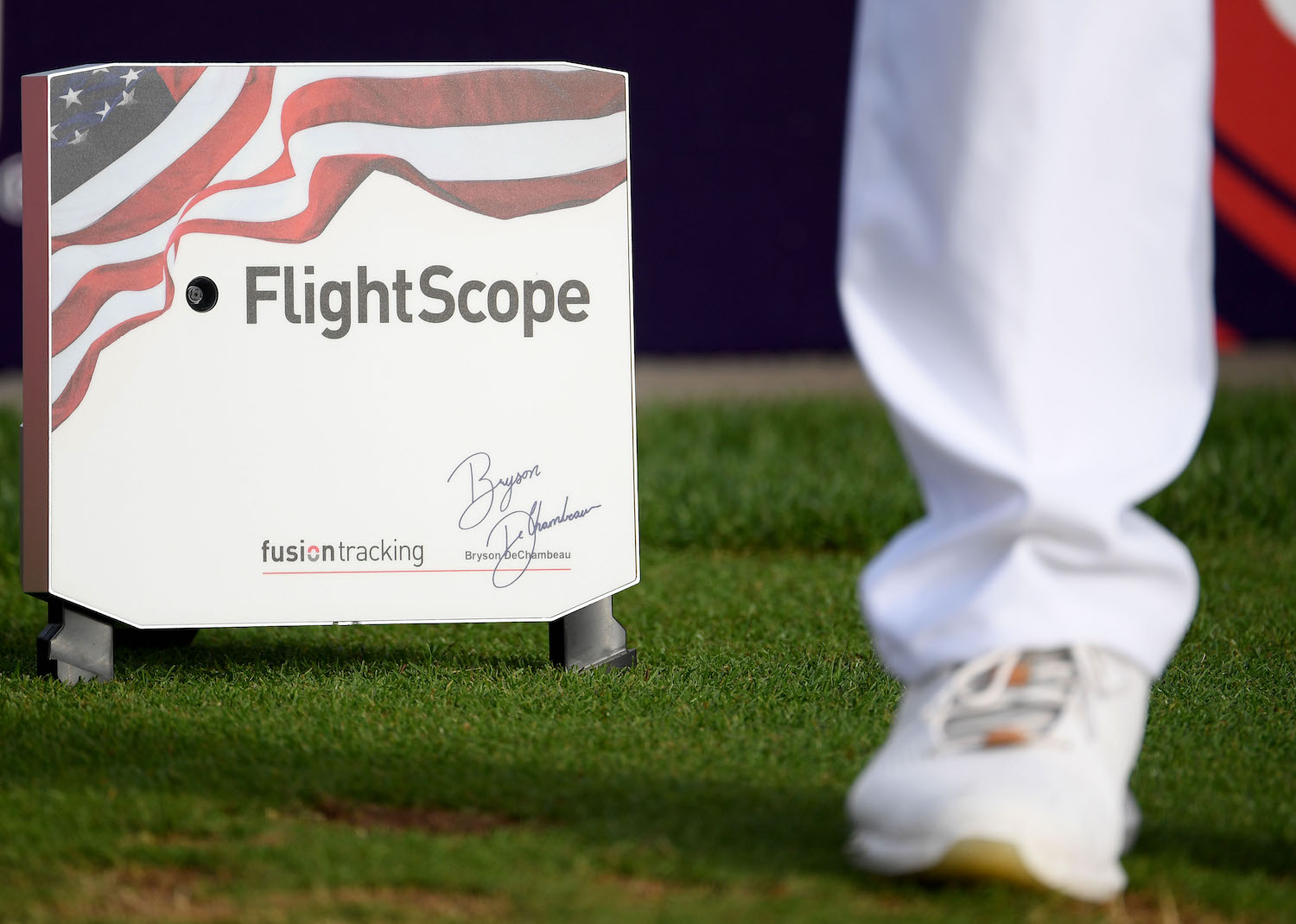They use advanced camera systems and radar technology to track golf balls on TV. These technologies provide real-time data and visualization.
Tracking golf balls on TV has revolutionized the viewing experience for fans and players. Advanced camera systems capture high-speed footage of the ball’s flight path. Radar technology measures the ball’s speed, trajectory, and distance accurately. This combination allows broadcasters to provide real-time data and visualizations, enhancing the audience’s understanding of each shot.
Viewers can see the ball’s exact movement, speed, and landing spot, making the game more engaging. These innovations have made watching golf on TV more dynamic and informative. They offer a detailed insight into the players’ skills and strategies, making each game more enjoyable to watch.
Introduction To Golf Ball Tracking
Watching golf on TV has become more exciting. Tracking technology lets viewers follow the ball’s flight. This innovation brings the game closer to the audience.
How do they track golf balls on TV? Advanced systems and techniques are used. Let’s explore the journey of this technology.
Evolution Of Tracking Technology
Early broadcasts had no tracking. Viewers often lost sight of the ball. Ball tracking started with simple graphics.
Today, technology has evolved. Radar and camera systems are used. These systems provide real-time tracking. They capture the ball’s speed, angle, and distance.
ShotLink and TrackMan are popular systems. They use multiple cameras and sensors. This ensures accurate tracking of every shot.
Importance In Modern Broadcasting
Ball tracking adds excitement to broadcasts. Viewers can see the ball’s entire flight. This makes the game more engaging.
Real-time data enhances the viewer experience. It provides insights into player performance. Fans can see stats like ball speed and distance.
Broadcasters use this data for analysis. It helps explain the game better. This technology has revolutionized golf broadcasts.

Credit: par3nearme.com
High-speed Cameras
Tracking golf balls on TV is a fascinating process. High-speed cameras play a key role. These cameras capture the ball’s rapid movements in great detail. They provide real-time data that enhances the viewing experience.
Capturing Rapid Movements
High-speed cameras can capture thousands of frames per second. This allows for precise tracking of the golf ball’s flight. The cameras are placed at strategic points on the course. They follow the ball from the tee to the hole.
The high frame rate ensures no movement is missed. This is crucial for analyzing the ball’s trajectory. Viewers can see every spin and bounce in slow motion. This technology provides a deeper understanding of the game.
Integration With Broadcast Systems
High-speed cameras are integrated with broadcast systems. This allows for seamless live coverage of golf tournaments. The data from the cameras is processed in real-time. This information is then displayed on-screen for the viewers.
The integration also includes graphical overlays. These show the ball’s speed, distance, and trajectory. This makes the broadcast more engaging and informative. Broadcasters can provide instant replays and analysis.
Overall, high-speed cameras enhance the golf viewing experience. They provide detailed insights into the game’s dynamics. This technology has revolutionized how golf is watched on TV.
Radar Technology
Radar Technology has revolutionized how golf is viewed on TV. This advanced system allows viewers to follow the ball’s trajectory with precision. It enhances the viewing experience by providing detailed data and visuals.
How Radar Tracks Golf Balls
Radar systems emit radio waves to track golf balls. These waves bounce back when they hit the ball. This data is then processed to determine the ball’s position.
- Radar emits radio waves.
- Waves bounce off the ball.
- Data is processed to find the ball’s position.
Radar can track the ball in real-time. It provides accurate data on speed and distance. The technology ensures that viewers never lose sight of the ball.
Advantages Of Radar Systems
Radar systems offer many benefits for golf broadcasts. Below are some key advantages:
| Advantage | Description |
|---|---|
| Accuracy | Radar provides precise data on the ball’s position. |
| Real-Time Tracking | Viewers can see the ball’s path instantly. |
| Enhanced Viewing | Improves the overall experience for golf fans. |
Accuracy is one of the biggest advantages. Radar systems are highly precise. This ensures that the ball’s position is tracked accurately.
Real-Time Tracking is another benefit. Viewers can watch the ball’s path instantly. It makes the game more exciting and engaging.
Enhanced Viewing experience is a major plus. The technology provides detailed visuals. Fans enjoy a more immersive experience.
Optical Tracking Systems
Optical tracking systems have revolutionized how we watch golf on TV. They use advanced technology to track golf balls with precision. This makes the game more exciting for viewers.
Basics Of Optical Tracking
Optical tracking systems use high-speed cameras and sensors. These devices capture the ball’s movement in real-time. The data is then processed to create visual graphics on screen.
The cameras are placed around the golf course. They can capture the ball’s speed, spin, and trajectory. This data is essential for providing accurate visual feedback.
Some key components include:
- High-speed cameras: Capture rapid movements.
- Sensors: Detect the ball’s position and speed.
- Computing units: Process the data quickly.
Applications In Golf
Optical tracking systems have various applications in golf. They help commentators provide detailed analysis. Viewers can see the ball’s path clearly.
Here are some common applications:
- Trajectory visualization: Shows the ball’s flight path.
- Speed measurement: Displays how fast the ball is traveling.
- Impact analysis: Examines the ball’s spin and impact angle.
These systems also assist in player training. Coaches can analyze the player’s performance in detail. This helps in improving techniques and strategies.
Rfid And Gps Solutions
Golf ball tracking technology has advanced rapidly. RFID and GPS solutions are the leading methods. These technologies provide accurate data and enhance the viewing experience. Let’s explore how these systems work.
Rfid Tags In Golf Balls
RFID tags are small devices placed inside golf balls. These tags emit radio signals. These signals are picked up by RFID readers. The readers track the ball’s location and movement. This technology ensures precise tracking on the golf course.
The use of RFID tags offers several benefits:
- Real-time tracking
- High accuracy
- Durability
RFID tags are lightweight and do not affect the ball’s performance. They are embedded during the manufacturing process. This ensures they are secure and reliable.
Role Of Gps In Tracking
GPS technology plays a crucial role in golf ball tracking. GPS satellites communicate with the golf balls. This provides accurate location data. GPS systems are used in various sports, including golf.
GPS tracking offers:
- Wide coverage
- High precision
- Real-time updates
Using GPS, broadcasters can display the ball’s position on TV. This enhances the viewer’s experience. Fans can follow every shot with precision.
Here’s a comparison of RFID and GPS solutions:
| Feature | RFID | GPS |
|---|---|---|
| Accuracy | High | Very High |
| Coverage | Limited | Global |
| Real-time tracking | Yes | Yes |
| Implementation | Embedded in ball | Satellite-based |
Data Analysis And Visualization
Tracking golf balls on TV involves advanced data analysis and visualization techniques. These technologies ensure that viewers get the best experience. Let’s explore how data is transformed into graphics and analyzed in real-time.
Transforming Data Into Graphics
Golf ball tracking starts with capturing data from various sensors. These sensors include radar and cameras placed around the golf course. The collected data is then processed to determine the ball’s position and speed.
- Sensors capture the ball’s location.
- Data is processed in real-time.
- Graphics are generated from the data.
Advanced algorithms convert the raw data into visual graphics. These graphics show the ball’s trajectory and landing spot. The graphics are then overlaid on the live video feed. This creates a seamless viewer experience.
Real-time Analysis For Viewers
Real-time analysis ensures viewers get instant updates. The data from the sensors is processed quickly. This allows the ball’s path to be shown live.
- Data is sent to the processing unit.
- Algorithms analyze the ball’s flight.
- Information is displayed on screen.
Viewers can see the ball’s speed, distance, and trajectory immediately. This information enhances the viewing experience. Real-time graphics make the game more engaging and informative.
| Data Type | Information Provided |
|---|---|
| Speed | Shows how fast the ball is traveling. |
| Distance | Indicates how far the ball has traveled. |
| Trajectory | Displays the ball’s flight path. |
The combination of data analysis and real-time visualization brings the game to life. Golf fans can follow every shot with precision and clarity.
Challenges In Golf Ball Tracking
Tracking a golf ball on TV presents multiple challenges. Various factors complicate the process, ranging from environmental influences to technological limitations. Understanding these challenges can shed light on the efforts behind those seamless broadcasts.
Environmental Factors
Environmental conditions affect golf ball tracking significantly. Weather changes, like heavy rain or dense fog, reduce visibility. Wind speeds can alter the ball’s trajectory unpredictably. These natural elements make it harder for tracking systems to maintain accuracy.
Furthermore, varying light conditions also pose a challenge. Bright sunlight or deep shadows can obscure the ball. This necessitates constant adjustments in camera settings and positioning. The natural surroundings of a golf course, such as trees and uneven terrain, add another layer of complexity.
Technological Limitations
Despite advancements, technological limitations still exist in golf ball tracking. The speed of a golf ball can reach over 150 mph. This rapid movement requires high-speed cameras and advanced software.
Tracking systems rely on sophisticated algorithms to predict the ball’s path. These algorithms sometimes fail, especially in tricky shots. Additionally, the equipment used must withstand various environmental conditions, adding to the challenge.
| Factor | Challenge |
|---|---|
| Weather | Reduces visibility, alters trajectory |
| Light Conditions | Obscures ball, requires constant adjustments |
| Speed | Rapid movement needs high-speed cameras |
| Algorithms | Occasional failures in tricky shots |
Adapting to these challenges requires continuous innovation. Engineers and technicians work tirelessly to improve tracking systems. Their efforts ensure viewers get the best possible experience.

Credit: www.topgolf.club
Future Of Golf Ball Tracking
The future of golf ball tracking looks very exciting. New technologies are changing the game. These innovations make it easier to follow golf balls on TV. Let’s explore what’s next for golf ball tracking.
Innovations On The Horizon
Smart golf balls could change the way we watch the game. These balls have tiny sensors inside them. The sensors send data to the tracking system.
- More accurate tracking
- Real-time data
- Enhanced viewer experience
Drone technology is another exciting development. Drones can follow the ball in flight. They provide unique camera angles and perspectives.
- Better visuals
- Less intrusive than ground cameras
- Improved ball tracking
Potential Impact On The Game
New tracking technologies can change how we experience golf. Better tracking makes it easier to follow the game. Fans can see the ball’s path and speed.
| Technology | Impact |
|---|---|
| Smart Golf Balls | More accurate data |
| Drones | Enhanced visuals |
These technologies also help players improve. They can analyze their shots better. This leads to better performance on the course.
Golf broadcasts will become more interactive. Viewers can get more involved in the game. They can access detailed stats and analysis.
Overall, these innovations promise to make golf more exciting. They bring new ways to enjoy and understand the game.

Credit: www.sportscasting.com
Frequently Asked Questions
How Do They Track Golf Balls On The PGA Tour?
They track golf balls on the PGA Tour using high-speed cameras and radar technology. This system captures ball speed, spin, and trajectory.
How Do Golf Simulators Track The Ball?
Golf simulators track the ball using high-speed cameras, infrared sensors, and radar technology. These devices capture data on ball speed, spin, and trajectory. The collected information is then processed to create a realistic simulation of the ball’s flight path.
How Do They Track Your Ball At Topgolf?
Topgolf tracks your ball using microchips embedded in the golf balls. Sensors around the range detect and track each ball’s location.
How Do You Track Golf Balls In Videos?
We use high-speed cameras and tracking software to follow golf balls in videos. The technology captures ball flight accurately.
Conclusion
Tracking golf balls on TV uses advanced technology. This enhances viewers’ experience and provides detailed insights. From radar systems to high-speed cameras, each method plays a crucial role. These innovations continue to evolve, making golf broadcasts more engaging. Stay tuned for more advancements in sports technology.





